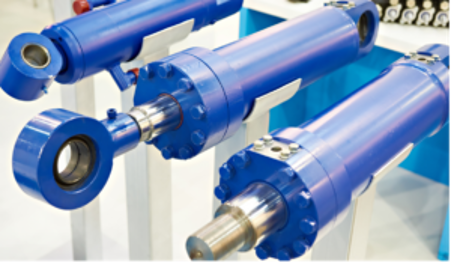10 Tips For Safe Hydraulic Cylinder Storage
The importance of safe hydraulic cylinder storage can sometimes be underestimated. Yet, it's a fundamental aspect of responsible equipment management that affects both operational efficiency and, more critically, the safety of your workforce. In this blog post, we highlight our top tips into the crucial art of hydraulic cylinder storage, exploring why it matters and how adopting best practices can ensure not only the longevity of these hydraulic workhorses but also the well-being of those who operate in their presence.
Safe hydraulic cylinder storage is essential to prevent issues down the line. Here are 10 crucial tips to ensure your hydraulic cylinder storage practices are on-point:
Clean and inspect:
Before storing hydraulic cylinders, clean them thoroughly to remove any dirt or contaminants. Inspect them for damage, such as leaks or bent rods, and make any necessary repairs before storage.
Label and document:
Clearly label each cylinder with important information, including its type, capacity, working pressure, and last inspection date. Maintain a record of each cylinder's history, including maintenance and repair records.
Proper location:
Store hydraulic cylinders in a well-ventilated, dry, and clean area to prevent corrosion. Keep them away from sources of extreme heat, cold, or direct sunlight.
Secure storage:
Ensure the cylinders are stored in a stable and upright position to prevent them from falling or rolling. Use racks or storage bins designed for this purpose.
Cylinder protection:
Use protective caps on the cylinder rods to prevent damage and contamination. If the cylinders are equipped with rod eyes or other vulnerable components, protect them with suitable covers.
Lubrication:
Apply a light coat of hydraulic oil or a suitable rust inhibitor on exposed surfaces to prevent corrosion. Rotate and exercise the cylinders periodically to keep the seals lubricated.
Ventilation:
Maintain good ventilation to prevent the buildup of fumes or gases, as hydraulic cylinders may contain hydraulic fluid or other substances that can be harmful when released.
Avoid stacking:
Do not stack hydraulic cylinders on top of each other, as this can lead to damage or deformity over time. If stacking is necessary, use proper storage equipment designed for this purpose.
Handling and transportation: Use proper lifting equipment and techniques when moving cylinders. Avoid dropping or dragging them, as this can cause damage or deform the cylinder components.
Regular inspection:
Periodically inspect stored cylinders to ensure they remain in good condition. Look for signs of leakage, damage, or deterioration and address any issues
Hydraulic Cylinder Stockist and In-House Repair Service
At VHS Hydraulic Components we are a hydraulic cylinder stockist and have vast quantities of hydraulic cylinders available, with most sizes stocked up to 1 metre stroke.
Working with our sister company Neilson Hydraulics, we also offer an in-house cylinder repair service. We offer a quick, efficient turnaround on repairs of general hydraulic cylinders, providing a detailed quotation, test certificate and serial number.

You may also be interested in our other hydraulic cylinder articles below:
Bosch Rexroth Hydraulic Cylinders
To enquire or speak to our technical team about all your hydraulic cylinder requirements, please contact VHS Hydraulic Components on: 0114 276 4430 / E: info@www.hydraulic-components.net or visit our website at: https://www.hydraulic-components.net





 No Minimum Order
No Minimum Order















